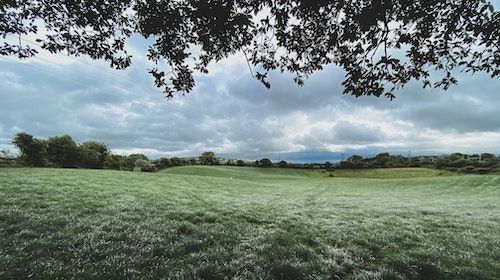
30 July 2021
The recent Welsh regulations aimed at tackling diffuse agricultural pollution in rivers will be challenged in the High Court by the National Farmers Union (NFU) Cymru. Whilst Ministers believe the regulations, which control how slurry and fertilisers are used, are needed to tackle pollution incidents, NFU Cymru has won the right to ask a judge to intervene. It will argue that the way the Welsh government handled the all-Wales nitrate vulnerable zone (NVZ) was unlawful.
Recent research concludes that soil loss by water erosion is projected to increase by 13% to 22.5% in the EU and the UK by 2050. Rainfall erosivity is identified as the main driver of this increase in water erosion and the paper recommends policy measures for soil conservation to mitigate future erosion.
A new review of credit protocols for soil carbon sequestration by the Environmental Defense Fund and the Woodwell Climate Research Center found that current credits lack comparability and consistency, which creates uncertainty in soil carbon markets. However, efforts are currently underway to improve the quality of credits and help realize the full greenhouse gas mitigation potential of agricultural soils.
On a similar topic in the UK, a Farming UK article discusses three projects that have been awarded funding to help develop new carbon markets for regenerative agriculture, saltmarsh restoration and lowland peatlands. This includes the pilot UK Farm Soil Carbon Code in Gloucestershire led by a consortium of organisations including the Farming and Wildlife Advisory Group South-West (FWAG) and the SSA.
Recent extreme weather in the UK has prompted the development of a sustainable rotation that improves soil health and nitrogen use efficiency at the AHDB’s Taunton Monitor Farm. The farm is investigating the use of nitrogen inhibitors and biostimulants, as well as the integration of livestock manure, spring cropping and cover crops to offer further benefits.
A new Irish soil monitoring app has been developed to diagnose problems and recommend management strategies. Based on Visual Evaluation of Soil Structure (VESS), the technique allows for the assessment and scoring of soil and root structure using an infield evaluation using a spade and ruler.
The European Commission has adopted a package of proposals to make the EU's policies fit for reducing net greenhouse gas emissions by at least 55% by 2030, compared to 1990 levels. In this reform package, a chapter is dedicated to agricultural and forestry practices, as the new plan raises the target for carbon capture by natural sinks.
An article in the Financial Times explores how rewetting drained peatland could be more sustainable than using it to grow crops. It follows the journey of a sustainable organic farmer trying to determine what net-zero agriculture looks like, which could involve burning wood to power a stacked vertical farm in the English countryside due to the presence of peat on his land.
A new paper reviews the contributions of soil science to five major environmental challenges since 2010 and highlights that whilst researchers have contributed to recommendation reports, the work is rarely translated into policy. It concludes that interdisciplinary work should assess trade-offs and synergies between soils and other domains, and integrating monitoring and modelling is key for robust and sustainable soils-based policymaking.